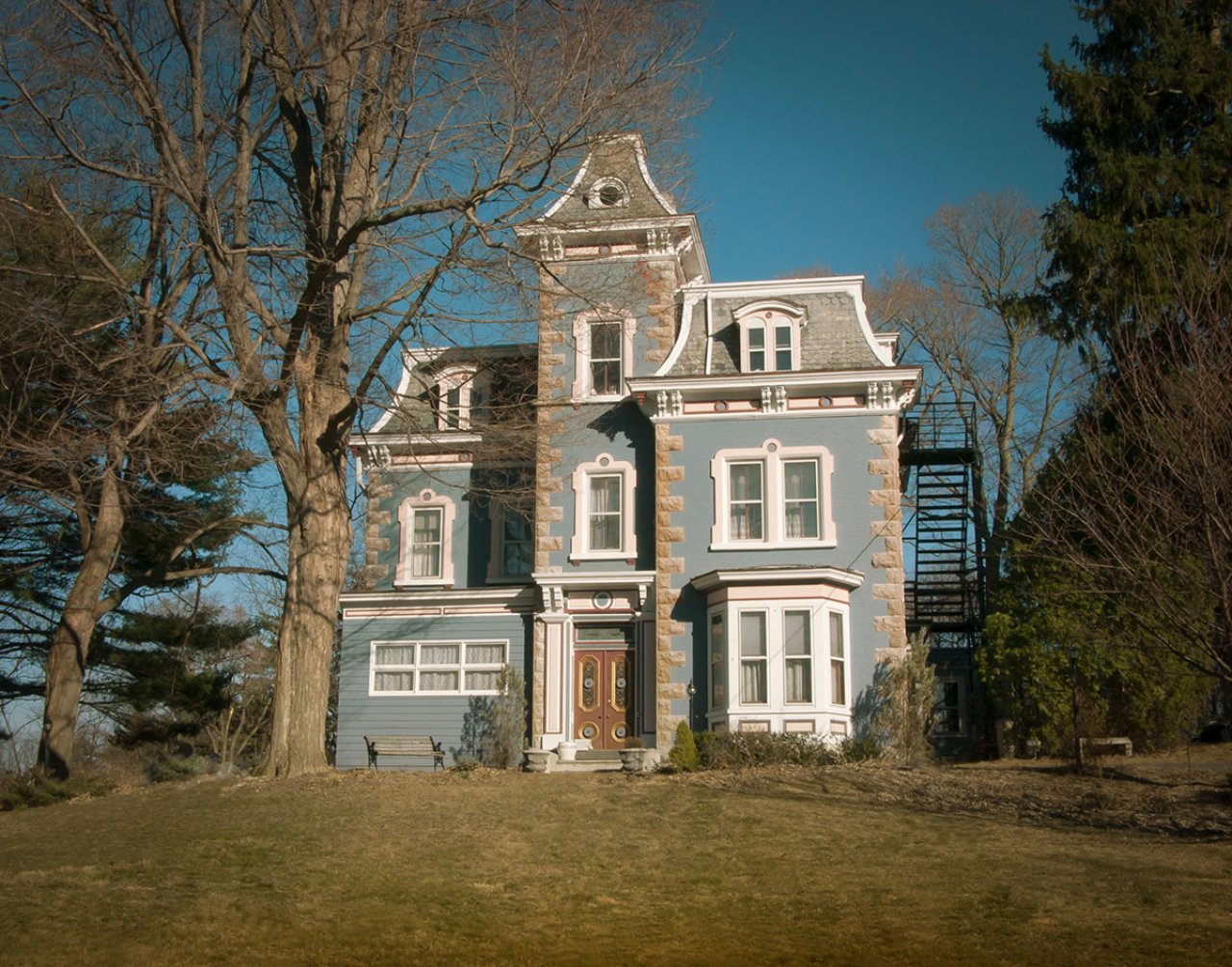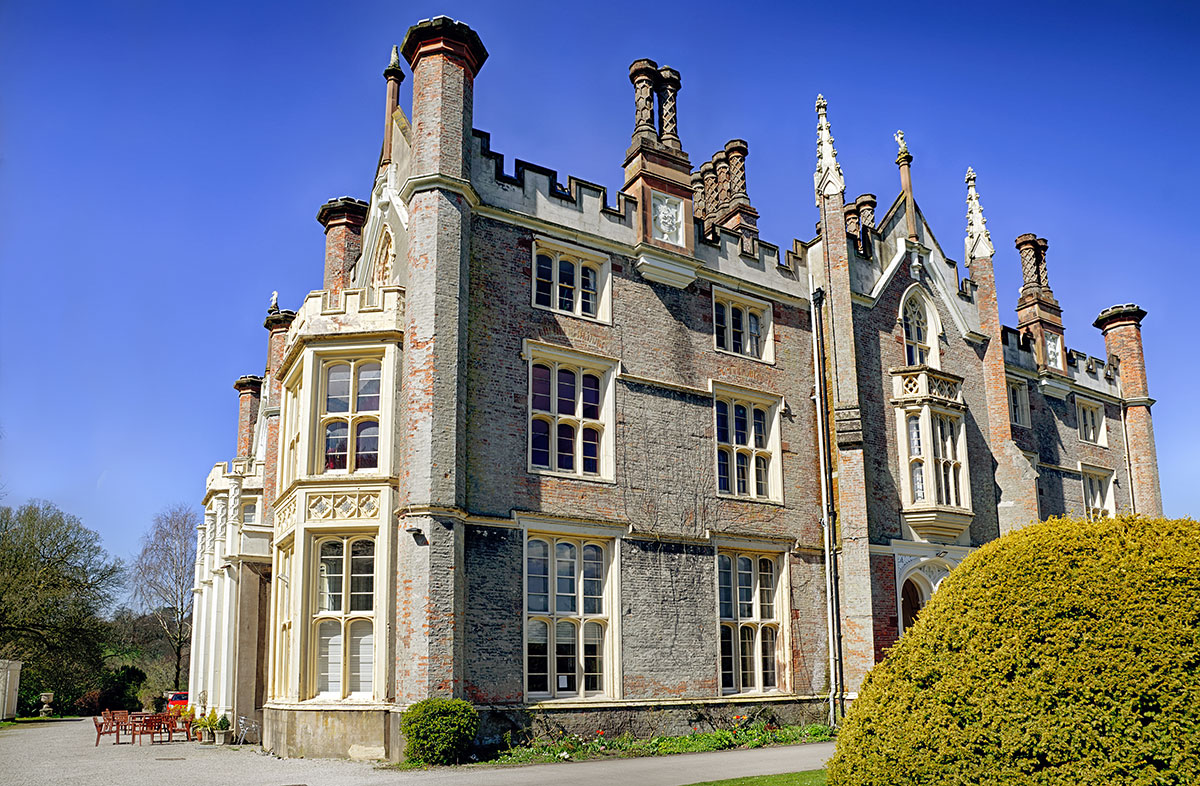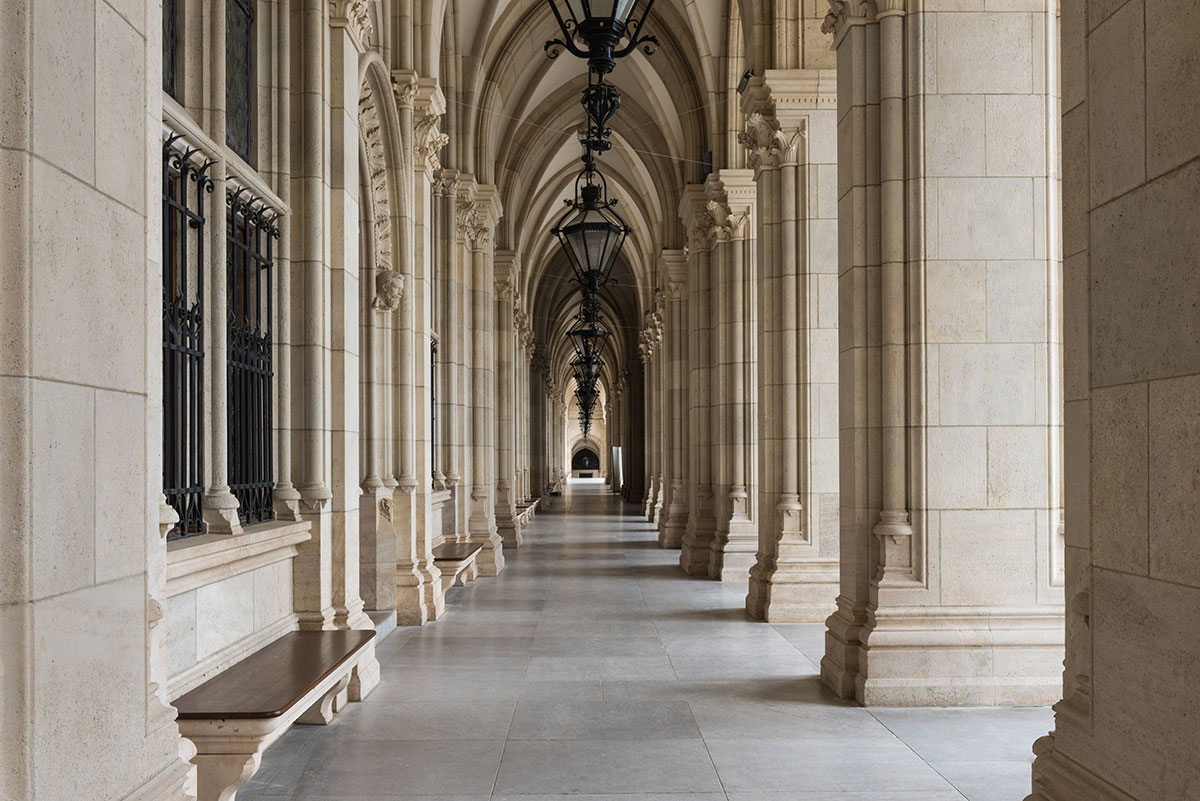Exploring the Timeless Appeal of the Gothic Architecture House

Arqsix
September 23rd, 2024

What defines a Gothic architecture house? Known for its pointed arches, ribbed vaults, and dramatic spires, this architectural style has a timeless appeal. In this article, we’ll delve into the origins, key elements, and modern adaptations of Gothic architecture houses.
The Origins of Gothic Architecture
The Abbey of Saint-Denis in northern France marked the emergence of Gothic architecture as a distinct style in the early 12th century. Abbot Suger, the visionary behind the renovation of the Abbey between 1140 and 1144, introduced innovative architectural features that would define the Gothic style. His work emphasized height, light, and grandeur, setting a new standard for ecclesiastical buildings.
Many consider the Basilica of Saint-Denis, completed in 1144, as one of the inaugural Gothic-style buildings. Its architectural innovations, including pointed arches and ribbed vaults, paved the way for the construction of other significant Gothic cathedrals across northern France, such as Notre Dame de Paris and Chartres Cathedral. These structures not only showcased the aesthetic potential of Gothic design but also demonstrated its practical advantages in supporting taller and more complex buildings.
Beyond France, Gothic architecture made its mark, influencing diverse art forms like sculpture, textiles, painting, and illuminated manuscripts. During the 13th and 14th centuries, the style was widely patronized by bishops, abbots, kings, nobles, and an emerging bourgeois class, further cementing its place in architectural history.
The term ‘Gothic’ was initially used pejoratively by Italian writers during the Renaissance, who associated it with barbarism. However, the enduring appeal and grandeur of Gothic architecture have long since transcended such early criticisms, establishing it as one of the most celebrated architectural styles in history.
Defining Features of Gothic Architecture Houses
 Image by glasslanguage, iStock
Image by glasslanguage, iStock
Pointed arches, ribbed vaults, and flying buttresses make Gothic architecture houses instantly recognizable. These elements not only contribute to the structural integrity of the buildings but also impart a sense of height and grandeur. Pointed arches, for instance, are more efficient at supporting heavy loads compared to rounded arches, allowing for taller and more expansive structures.
The use of stained glass and rose windows stands out as one of the most striking aspects of Gothic architecture. These large, colorful windows not only bring light and color into the interiors but also create a sense of openness and airiness. Pointed arch windows, often rising to a pointed top, are a hallmark of Gothic houses, mirroring the style of grand cathedrals.
Gothic-style homes, including carpenter gothic buildings, also feature dramatic architectural elements like tall spires, steeply pitched roofs, and large chimneys or towers, all of which are modeled after medieval gothic buildings. These features create a palatial and imposing appearance that is both timeless and awe-inspiring.
Additionally, decorative fretwork or stonework is commonly found around the trim of Gothic-style homes, adding intricate details that enhance the overall aesthetic. Wood trim or latticework on the front porch is typical in Carpenter Gothic style homes constructed of wood or masonry, providing a cohesive and historically accurate look.
Famous Examples of Gothic Architecture Houses
 Image by Khrizmo, iStock
Image by Khrizmo, iStock
In the realm of Gothic architecture, certain structures stand out as paragons of the style, showcasing its unique features and historical significance. One such example is Chartres Cathedral in France, built between the late 12th and mid-13th centuries. It is one of the best-preserved Gothic structures in Europe, renowned for its stunning stained glass and architectural harmony.
Notre Dame de Paris, another iconic example, began construction in 1163 and has since become synonymous with French Gothic architecture. Its flying buttresses, intricate facade, and legendary status make it a must-visit for anyone interested in Gothic design. The cathedral’s resilience, even after the devastating fire in 2019, underscores its enduring appeal.
Amiens Cathedral, the tallest cathedral in France, is another notable example. Built in the 13th century, it is believed to house the head of John the Baptist, adding a layer of historical and religious significance to its architectural grandeur. The cathedral’s lofty ceilings and detailed sculptures exemplify the Gothic style’s emphasis on verticality and ornamentation.
Cologne Cathedral in Germany is the largest Gothic cathedral in Northern Europe, taking around 600 years to complete. Its towering spires and expansive interior space are testaments to the ambition and skill of Gothic architects.
Similarly, Milan Cathedral in Italy, known for its ornate facade and complex forest of spires, stands as the largest church in Italy, embodying the Gothic style’s grandeur and intricacy.
The Resurgence of Gothic Architecture
Modern architects have rekindled interest in Gothic architecture in recent years by merging traditional elements with contemporary design principles, giving rise to gothic revival architecture. This fusion emphasizes light and space, using large windows and high ceilings to create open and inviting interiors. Architects reinterpret traditional Gothic elements such as pointed arches and ribbed vaults in innovative ways to suit modern aesthetics.
Modern Gothic architecture, including Victorian Gothic, balances traditional aesthetics with modern functionalities, such as energy efficiency and acoustic performance. This approach ensures that Gothic-inspired buildings, including gothic revival buildings and the gothic building, are not only visually stunning but also practical for contemporary living. Ornamentation, including gargoyles and grotesques, is often used as artistic expressions or focal points, adding a touch of historical charm to modern structures.
The Shard in London and the Milwaukee Art Museum in Wisconsin serve as examples of modern Gothic architecture. These buildings demonstrate how Gothic elements can be seamlessly integrated into cutting-edge designs, creating a harmonious blend of old and new.
Why Choose a Gothic Architecture House?
 Image by syolacan, iStock
Image by syolacan, iStock
Embracing a Gothic architecture house means opting for a style known for its timeless beauty and emotional impact. The intricate designs and grand structures of Gothic houses evoke a sense of awe and grandeur, making every day feel like a step back into a more elegant and majestic era. The dramatic ornamentation and bold forms inherent in Gothic design create an atmosphere that is both captivating and unique.
Gothic architecture houses are not just beautiful; they are also symbols of luxury and status. Often associated with high-end real estate, these homes reflect a level of sophistication and refinement that few other architectural styles can match. Owning a Gothic architecture house is a statement of taste, history, and a love for architectural artistry.
Living in a romantic gothic revival-style home has an undeniable emotional impact. The elaborate ornamentation, tall ceilings, and dramatic forms create a living space that is both inspiring and comforting, offering a retreat from the mundane and a connection to a rich architectural heritage.
Gothic Revival Style in Modern Homes
Inspired by the historical Gothic Revival movement, contemporary designers infuse drama and sophistication into modern spaces by incorporating gothic revival details. The gothic revival influence is evident as they integrate pointed arches into doorways and windows, creating a sense of verticality and elegance that harks back to medieval cathedrals. Ribbed vaults, another hallmark of Gothic design, are reimagined to create visually striking ceiling designs in modern interiors.
Flying buttresses, traditionally used to support the weight of tall structures, are now often reinterpreted as decorative elements in contemporary designs. This creative use of Gothic elements adds a unique and historical touch to modern buildings, bridging the gap between past and present.
Gothic tracery, characterized by intricate stone or woodwork, is often reimagined in furniture, room dividers, or wall panels. This allows for the incorporation of Gothic details into everyday living spaces without compromising modern functionality. Materials like concrete, steel, and glass are used to achieve these intricate details, ensuring structural integrity while maintaining the aesthetic appeal.
Stained glass windows, a staple of Gothic architecture, inspire modern iterations that play with light and color to create vibrant and dynamic spaces. Additionally, designers might incorporate figurative elements like gargoyles in a symbolic capacity, adding a layer of historical charm and whimsy to contemporary homes.
How Arqsix Brings Gothic Architecture to Life
To bring Gothic architecture projects to life, Arqsix offers a wide range of services, including:
3D visuals
Complex 3D models
Photorealistic architectural renderings
3D animation
Real estate AR-VR
This comprehensive suite of services ensures that clients can see their Gothic architecture dreams rendered in stunning detail.
The team at Arqsix comprises highly skilled 3D modelers and qualified architect project managers, enabling them to handle both small and large-scale projects with equal proficiency. Their expertise in advanced technologies such as 3D rendering and virtual reality provides clients with immersive experiences, allowing them to visualize their projects in a realistic and engaging manner.
By creating photorealistic digital representations, Arqsix helps clients bring their Gothic architecture houses to life. Their services include:
Creating 3D models of Gothic architecture houses
Rendering the models to the highest standards
Capturing the intricate beauty and grandeur of Gothic design
Their commitment to excellence and attention to detail ensure that every project is rendered to the highest standards.
Case Studies: Gothic Architecture Projects by Arqsix
Arqsix has undertaken several projects that showcase their skill in bringing historic Gothic architecture styles to life through the use of modern technology. These projects not only highlight the company’s expertise but also contribute to the modern appreciation and revival of Gothic architecture.
One notable project involved the visualization of a Gothic-style mansion, where Arqsix used advanced 3D modeling to capture the intricate details of the building’s facade and interior. This project demonstrated how modern technology could faithfully recreate the grandeur and complexity of Gothic architecture.
Another project focused on a Gothic Revival church, where Arqsix’s photorealistic renderings helped the client visualize the restoration and renovation plans. By blending historical accuracy with modern design elements, Arqsix played a crucial role in breathing new life into this historic structure.
Customizing Your Gothic Architecture House
To create a dramatic and sophisticated interior, customizing a Gothic architecture house involves blending historical elements with modern touches thoughtfully. One effective way to achieve this is by using patterned wallpaper with rich, dramatic designs. These patterns add depth and diversity to the interior, creating a visually stimulating environment that echoes the intricate details of Gothic architecture.
Furniture plays a significant role in achieving a Gothic-inspired look. Here are some key elements to consider:
Curved furniture
Velvet materials
Heavy fabrics featuring elaborate patterns
Victorian-inspired styling with high arches and dramatically draped fabrics
Bold design elements such as wrought iron chandeliers
These elements can transform a space, adding opulence and a touch of medieval charm, and help create a cohesive Gothic atmosphere.
Decorative moldings are another key element in customizing your Gothic home. These moldings add a soft yet deliberate Gothic touch, emphasizing the architectural details of the space. Professional installation is recommended to ensure that the moldings are seamlessly integrated and beautifully executed.
Lighting is also crucial in Gothic Revival homes. Some tips for lighting your Gothic home include:
Using tungsten lights in large wrought iron chandeliers to recreate the dramatic light and shadow effects typical of Gothic interiors
Incorporating wall sconces with intricate designs to enhance the overall ambiance
Installing dimmer switches to adjust the lighting levels and create different moods in different areas of the home
By paying attention to these details, you can create a truly stunning Gothic home that reflects your personal style and love for this unique architectural style.
Color choices are vital in setting the tone for a Gothic-inspired home. Some bold colors that make a statement and create a rich, inviting atmosphere are:
Emerald green
Ruby red
Dark ocean blue
Deep burgundy
These colors not only complement the Gothic architectural elements but also enhance the overall sense of drama and sophistication.
Summary
Throughout history, Gothic architecture has stood as a testament to human ingenuity and artistic expression. From its origins in the 12th century to its modern resurgence, Gothic architecture continues to inspire awe with its intricate designs and grand structures. Key features like pointed arches, ribbed vaults, and flying buttresses not only define the style but also contribute to its timeless appeal.
The modern reinterpretation of Gothic elements has allowed this architectural style to remain relevant and inspiring. Contemporary designers and architects draw on historical influences to create spaces that are both dramatic and functional. Companies like Arqsix play a pivotal role in bringing these visions to life, using advanced technologies to create photorealistic renderings that capture the essence of Gothic architecture.
In conclusion, choosing a Gothic architecture house is about more than just owning a beautiful home; it’s about embracing a rich architectural heritage and making a statement of taste and sophistication. Whether through customization or new construction, the timeless appeal of Gothic architecture continues to captivate and inspire.
 Image by arsenisspyros, iStock
Image by arsenisspyros, iStock
FAQs
Our location
Ready to share your expertise?
We welcome submissions from talented writers and experts in various fields who are passionate about sharing their knowledge and insights with our audience.
Write for UsArqsix - Shaping Stories, Shaping Spaces
Elevating real estate marketing for a world that’s always evolving.
2025 © Arqsix. All Rights reserved. |Sitemap|Privacy Notice